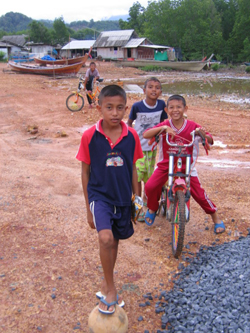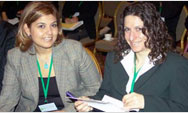You are here » Home » Telling Our Story
Photo & Caption
After Tsunami, Children Return to School

| |
Photo: USAID/Suzanne Ross
|
|
Elevated walkways in Kampuan village, Suk Samran district, keep children safe from unsanitary flood waters and help them get to school each morning, safe and dry.
|
Thai schoolchildren normally begin the school year at the start of the monsoon season. But in the Kampuan village clusters in southern Thailand’s Ranong province, starting the school year on time seemed impossible after the December 2004 tsunami. In addition to the devastation caused by the tsunami, some districts in southern Thailand experienced severe flooding during the rainy season that year. The flooding impeded access to schools, and it also exposed children to environmental hazards. Snakes from nearby waterways ventured into flooded areas and debris such as broken glass and metal were hard to see in muddy waters. The flooding also exacerbated hygiene problems, as sewage contaminated floodwaters.
In cooperation with local government officials, community organizations, and partners, USAID responded by building an elevated walkway using soil from different locations and compacting that soil along paths leading to school grounds in Kampuan.
USAID and its partners built the walkway using a cash-for-work initiative that provided income to villagers while they contributed time and labor to redesigning village infrastructures. This infusion of cash into the economy helped the entire community as it strives to recover from the effects of the tsunami.
The walkway has reduced children’s exposure to the unsanitary mud and water that build up during the flood season. It also increased overall safety, because many schoolchildren do not know how to swim — high floodwaters in the wrong area could end in tragedy. Children now walk or run to school along the elevated path, staying safe, keeping their feet warm, and allowing them to focus on their schoolwork.
Print-friendly version of this page (388kb - PDF)
Click here for high-res photo
Back to Top ^ | 

